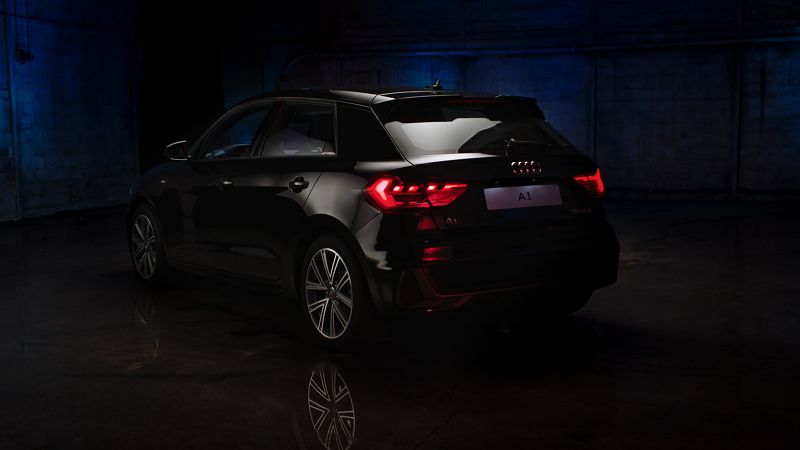
Choosing a truck that truly stands the test of time is a paramount decision for any owner, whether you’re navigating daily commutes, tackling demanding personal projects, or managing a rigorous commercial operation. Longevity and unwavering reliability aren’t just desirable traits; they translate directly into substantial cost savings, reduced downtime, and, perhaps most importantly, invaluable peace of mind. Industry experts widely agree that investing in a truck engineered for endurance yields significant returns, often saving tens of thousands of dollars in averted repairs and deferred replacement purchases over its operational life.
In today’s automotive landscape, it’s increasingly common for modern pickup trucks, especially those receiving diligent care, to effortlessly surpass the 200,000-mile (approximately 320,000 kilometer) mark. Groundbreaking automotive studies reveal that specific light-duty trucks boast a remarkable 20-30% or even higher probability of reaching 250,000 miles or more – a figure that far eclipses the average vehicle’s lifespan. Shifting gears to the commercial sector, heavy-duty trucks are meticulously engineered for even greater feats of endurance, with well-maintained semi-trucks routinely logging over 1,000,000 miles before necessitating a major overhaul. The disparity between an average passenger car’s lifespan and that of a dedicated truck can be immense, underscoring the specialized design and build quality inherent in these workhorses.
This comprehensive guide embarks on an exploration of some of the longest-lasting full-size trucks on the road today. We will delve into specific models renowned for their exceptional durability, presenting data on their longevity and dissecting the engineering choices and robust features that solidify their reputation for reliability. Whether your aim is to identify your next dependable pickup or to strategically expand your fleet with vehicles built for the long haul, this article is crafted to provide invaluable insights into durable and reliable options that promise to go the distance, and then some.

1. **Toyota Tundra – The Half-Ton Mileage Champion**
When the conversation turns to light-duty pickups, often affectionately referred to as half-ton trucks, the Toyota Tundra consistently emerges as a legend in its own right, celebrated for its extraordinary longevity. The Tundra has not only topped but often dominated multiple reliability and longevity studies, with one recent analysis specifically highlighting its impressive 36.6% chance of reaching 250,000 miles. This statistic is truly remarkable, placing it at roughly four times the average vehicle’s odds of achieving such a significant mileage milestone.
Owners frequently share anecdotes of their Tundras surpassing 300,000 miles and even extending well beyond, often retaining their original engines and transmissions, especially when meticulous maintenance schedules are diligently followed. This consistent performance isn’t mere coincidence; it’s the direct result of several foundational factors that are deeply embedded in the Tundra’s design and manufacturing philosophy. The unwavering commitment to building a vehicle that can endure heavy use and extensive travel defines the Tundra’s engineering DNA.
A key pillar of the Tundra’s durability lies in its **Proven Powertrains**. Traditionally, Tundras have been equipped with exceptionally robust V8 engines, notably the 4.7L and the more powerful 5.7L i-Force V8s. These engines have earned an ironclad reputation for their ability to sustain heavy loads and prolonged stress without faltering. Paired with equally durable transmissions, these powertrain combinations are known to deliver many years of reliable service with minimal need for major repairs, a testament to their inherent strength and conservative design.
Another significant contributor is Toyota’s hallmark approach of **Simplicity and Overengineering**. While the Tundra may not always be at the bleeding edge of automotive gadgetry, its components are built with an uncompromising focus on resilience. From its fully boxed frame, designed to absorb and distribute stress effectively, to its robust suspension system, every element is constructed to withstand severe and prolonged use. This deliberate choice to avoid excessive complexity, for instance, by foregoing turbochargers or intricate cylinder deactivation systems in older models, reduces potential failure points, directly enhancing the truck’s overall lifespan and dependability.
Furthermore, **Rigorous Quality Control** is a cornerstone of Toyota’s manufacturing excellence. The brand’s manufacturing processes and quality assurance protocols are consistently lauded as top-tier within the industry. Tundra owners are direct beneficiaries of this meticulous consistency, as it is exceptionally rare to encounter a “bad batch” of these trucks. This steadfast commitment to quality is powerfully reflected in consistently high customer satisfaction scores and impressive reliability ratings year after year, solidifying the Tundra’s position as a truly dependable vehicle that drivers can trust for the long haul. A powerful real-world illustration of the Tundra’s incredible longevity is the inspiring narrative of Victor Sheppard’s 2007 Tundra, which remarkably clocked 1 million miles on its odometer in an astonishing nine years of continuous use. Toyota, deeply impressed by this feat, took the extraordinary step of purchasing the truck from him to conduct a thorough tear-down and study its components, providing Mr. Sheppard with a brand-new truck as a fitting replacement. Even after traversing a million miles, that Tundra was reportedly still operating with its original engine and transmission intact—an extreme example, no doubt, but one that vividly underscores the phenomenal endurance capabilities of the Toyota Tundra.
Car Model Information: 2024 Toyota Tundra Hybrid Capstone
Name: Toyota Tundra
Manufacturer: Toyota
Production: May 1999 – present
ModelYears: 2000–present
Assembly: San Antonio,Texas
Class: Pickup truck#Full-size pickup truck
Layout: unbulleted list
Related: Toyota Sequoia
Predecessor: Toyota T100
Caption: 2022 Toyota Tundra Limited
Categories: 2000s cars, 2010s cars, 2020s cars, All-wheel-drive vehicles, All Wikipedia articles written in American English
Summary: The Toyota Tundra is a full-size pickup truck manufactured in the United States by the Japanese manufacturer Toyota since May 1999. The Tundra was the second full-size pickup to be built by a Japanese manufacturer (the first was the Toyota T100), but the Tundra was the first full-size pickup from a Japanese manufacturer to be built in North America. The Tundra was nominated for the North American Truck of the Year award and was Motor Trend magazine’s Truck of the Year in 2000 and 2008. Initially built in a new Toyota plant in Princeton, Indiana, production was consolidated in 2008 to Toyota’s San Antonio, Texas, factory.
Get more information about: Toyota Tundra
Buying a high-performing used car >>>
Brand: Toyota Model: Tundra
Price: $149,500 Mileage: 4,613 mi.
Read more about: The Unyielding Workhorses: 13 Legendary Pickup Trucks and Engines Engineered to Conquer Half a Million Miles (and Beyond) with Proper Care

2. **Ford F-150 – The Perennial Workhorse**
The Ford F-150 stands as America’s undisputed best-selling truck for many decades, a title it has fiercely maintained by simultaneously building an unshakeable reputation for reliability alongside its immense popularity. Given the sheer volume of F-150s populating our roads, their longevity can naturally exhibit some variation, particularly as Ford frequently introduces new engines and technological advancements. However, the F-150 consistently remains one of the most enduring full-size trucks available on the market.
According to rigorous industry data, the F-150 possesses approximately a 15.8% chance of surpassing the 250,000-mile mark, a figure that is roughly 1.8 times the average vehicle’s likelihood. While this percentage might appear slightly lower than the impressive figures posted by Toyota’s models, it’s crucial to remember that the F-150’s colossal sales numbers mean that even this percentage represents an enormous population of high-mileage F-150s actively on the road, confidently tackling challenges day after day.
One of the core strengths contributing to the F-150’s impressive longevity lies in its **Diverse but Robust Powertrains**. Over the past two decades, F-150s have been offered with a wide array of engines, ranging from the time-tested and naturally aspirated V8s, such as the widely respected 5.0L “Coyote” V8, to the more contemporary turbocharged EcoBoost V6s. The venerable V8s, in particular, are renowned for their exceptional durability and capacity for long-term performance. Even the more complex EcoBoost engines, while demanding diligent maintenance, have demonstrated strong longevity when properly cared for, though some owners remain cautious about potential issues like carbon buildup on direct-injection systems and the inherent complexity introduced by turbochargers.
Ford’s commitment to **Continuous Improvement** is another driving force behind the F-150’s enduring nature. The F-150 is consistently updated with cutting-edge materials and innovative engineering, exemplified by the introduction of the high-strength, military-grade aluminum alloy body in 2015, which significantly enhances corrosion resistance and reduces overall weight. Both the chassis and frame are constructed with an inherent toughness, designed to meet and exceed the rigorous demands of commercial users, a benefit that cascades into enhanced longevity for all owners. Ford trucks undergo exceptionally stringent durability testing, with the company frequently highlighting millions of miles of simulated durability tests conducted on its new models, ensuring they are built to last.
Furthermore, the **Easy Parts Availability** for the F-150 is a significant advantage for long-term ownership. Because it is such a pervasive and widely adopted vehicle, replacement parts—encompassing both OEM (Original Equipment Manufacturer) components and a vast array of aftermarket options—are readily available and generally quite affordable. This accessibility empowers owners to more easily repair and maintain their trucks for the long haul, even as they accumulate significant age and mileage. It is exceptionally rare to encounter difficulty in sourcing a part for an F-150, even for models that are two decades old, a convenience that greatly simplifies extended ownership.
It is certainly worth noting that the overall reliability and ultimate longevity of an F-150 can often be influenced by its specific configuration. A general principle holds true: simpler designs tend to lead to longer operational lives. An F-150 equipped with a base V8 engine and fewer complex gadgets might well outlast a highly loaded model boasting intricate features or the latest turbo engine, simply because there are fewer potential points of failure. Nevertheless, a substantial number of high-end F-150s, including luxurious Platinum trims or high-performance Raptor models, continue to operate robustly and reliably after many years of service, demonstrating the underlying strength of the F-150 platform across its diverse range.
Car Model Information: 2023 Ford F-150 Lariat
Name: Ford F-Series
Caption: 2022 Ford F-150 Lariat Luxury
Manufacturer: Ford Motor Company
Aka: Ford Lobo (Mexico, 1992–present)
Production: 1948–present
Class: Pickup truck#Full-size pickup truck
Layout: Front-engine, rear-wheel-drive layout,rear-wheel drive
Predecessor: 1941 Ford
Categories: All-wheel-drive vehicles, All Wikipedia articles written in American English, All articles that may contain original research, All articles with unsourced statements, Articles that may contain original research from September 2020
Summary: The Ford F-Series is a series of light-duty trucks marketed and manufactured by the Ford Motor Company since model year 1948 as a range of full-sized pickup trucks — positioned between Ford’s Ranger and Super Duty pickup trucks. Alongside the F-150 (introduced in 1975), the F-Series also includes the Super Duty series (introduced in 1999), which includes the heavier-duty F-250 through F-450 pickups, F-450/F-550 chassis cabs, and F-600/F-650/F-750 Class 6–8 commercial trucks.
Get more information about: Ford F-Series
Buying a high-performing used car >>>
Brand: Ford Model: F-150
Price: $48,309 Mileage: 23,551 mi.
Read more about: Driving Value: 15 Top Budget-Friendly Cars for 2025 Named ‘Best Buys’ for Cost-Conscious Shoppers

3. **Chevrolet Silverado & GMC Sierra 1500 – Long-Lasting Twins**
General Motors’ formidable full-size twins, the Chevrolet Silverado 1500 and the GMC Sierra 1500, are steadfast contenders among the most enduring trucks you can acquire in the market. Mechanically, these two vehicles are intrinsically the same truck, sharing a common platform and engineering, and their combined sales account for a colossal number of pickups actively traversing our roads.
According to comprehensive longevity data, the Chevrolet Silverado 1500 boasts an impressive approximately 18.8% chance of reaching 250,000 miles, with its sibling, the GMC Sierra 1500, close behind at around 16.1%. These figures position them significantly above the average for all vehicles, and in real-world scenarios, countless owners routinely report their Silverados and Sierras comfortably crossing the 200,000 to 300,000-mile thresholds, often with their original drivetrains still performing flawlessly.
At the very core of the Silverado and Sierra’s exceptional longevity is the enduring legacy of the **Proven Small-Block V8s** from the GM engine family, prominently featuring the 5.3L and 6.2L V8s. These engines have cultivated a legendary reputation for their ability to run reliably for an extended duration. They are generally not overstressed in most applications, delivering power efficiently without being pushed to their absolute limits, and their straightforward designs are intimately familiar to mechanics, simplifying diagnosis and repair. Routine maintenance tasks, such as replacing spark plugs or changing fluids, are relatively uncomplicated, thereby encouraging diligent upkeep and contributing directly to their extended lifespan.
Paired seamlessly with these robust engines are **Solid Transmissions**, typically reliable automatic gearboxes such as the venerable 6-speed and the more modern 8-speed and 10-speed automatics, which were famously co-developed with Ford. While certain model years may have experienced minor transmission quirks, the gearboxes found in high-mileage Silverados and Sierras generally prove to be incredibly durable, particularly if transmission fluid changes are performed periodically and as recommended. It is not uncommon to find many of these trucks still operating with their factory-installed transmission shifting smoothly and reliably well past the 200,000-mile mark.
The **Rugged Construction** of the Silverado and Sierra is another vital element in their enduring appeal. The frame and suspension systems of these trucks are unequivocally built for serious work—designed to handle substantial towing loads, carry heavy payloads, and absorb the relentless punishment of rough roads and challenging terrain. These trucks inherit a proud lineage from a heritage of farm and ranch vehicles, known for their ability to withstand severe abuse and continue operating without complaint. That deeply ingrained heritage contributes to a fundamental design ethos focused on handling long-term stress and maintaining structural integrity. Additionally, GM trucks have historically demonstrated a commendable resistance to severe rust compared to some of their competitors, though they are certainly not immune; a thorough inspection of the undercarriage is always a prudent step when considering a used model.
It’s important to acknowledge that GM trucks have evolved through various generations, and some specific generations may have presented particular weak points. For instance, certain models from the early 2000s experienced issues with rust on brake lines, or the Active Fuel Management (AFM) cylinder deactivation system on certain V8s was known to cause oil consumption concerns. However, such issues are typically well-documented within the automotive community and are often amenable to effective solutions. Generally speaking, if a Chevrolet Silverado or GMC Sierra is maintained diligently and properly, there is a very strong likelihood that it will remain a dependable vehicle on the road for 15 to 20 years or even longer, proving its worth as a true workhorse.
Car Model Information: 2022 Hyundai PALISADE Calligraphy
Name: Chevrolet Silverado/GMC Sierra
Caption: 2022 Silverado 2500HD High Country
Manufacturer: General Motors
Aka: unbulleted list
Production: 1998–present
Assembly: unbulleted list
Class: unbulleted list
BodyStyle: unbulleted list
Layout: unbulleted list
Predecessor: unbulleted list
Categories: 2000s cars, 2010s cars, 2020s cars, All-wheel-drive vehicles, All Wikipedia articles written in American English
Summary: The Chevrolet Silverado is a range of trucks manufactured by General Motors under the Chevrolet brand. Introduced for the 1999 model year, the Silverado is the successor to the long-running Chevrolet C/K model line. Taking its name from the top trim level from the Chevrolet C/K series, the Silverado is offered as a series of full-size pickup trucks, chassis cab trucks, and medium-duty trucks. The fourth generation of the model line was introduced for the 2019 model year.
The Chevrolet Silverado shares mechanical commonality with the identically related GMC Sierra; GMC ended the use of the C/K nomenclature a model generation prior to Chevrolet. In Mexico, high-trim level versions of the Silverado use the Chevrolet Cheyenne name (not to be confused with the 2003 concept). Competing against the Ford F-Series, Ram pickup, Toyota Tundra, and Nissan Titan, the Silverado is among the best-selling vehicles in the United States, having sold over 12 million trucks since its introduction in 1998 as a 1999 model year.
Get more information about: Chevrolet Silverado
Buying a high-performing used car >>>
Brand: Chevrolet Model: Silverado 1500
Price: $34,194 Mileage: 37,781 mi.
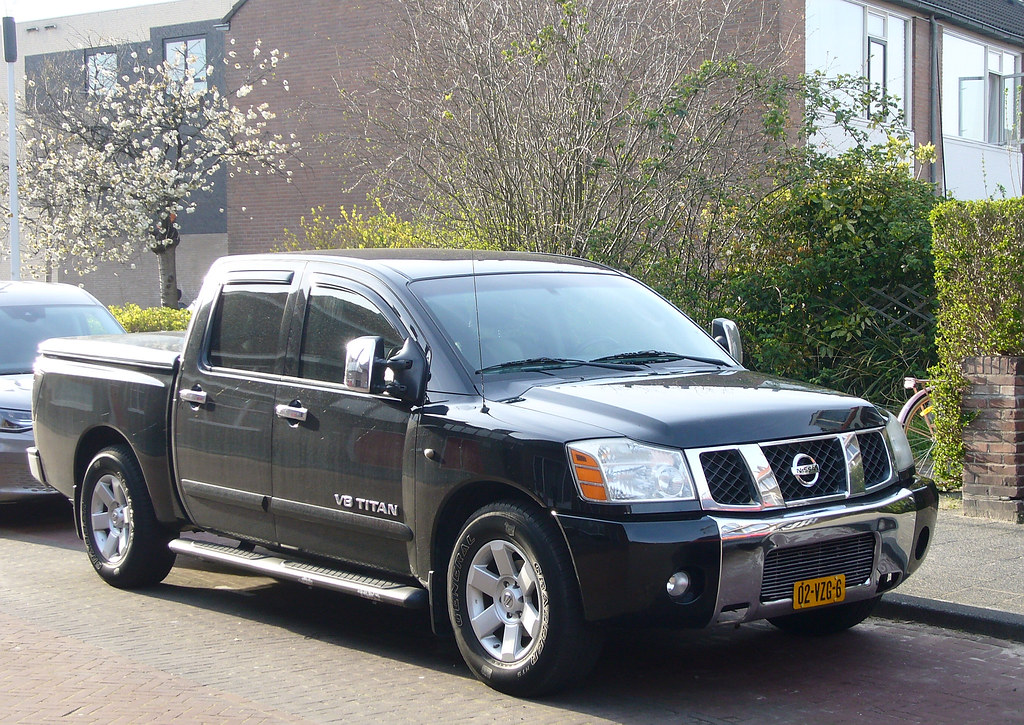
4. **Nissan Titan – Underrated but Solid V8 Contender**
While the Nissan Titan may not achieve the colossal sales figures of its American counterparts from Ford, General Motors, or Ram, it undeniably merits a prominent position in any comprehensive discussion concerning truck durability. Titans, particularly the robust first-generation models produced from 2004 to 2015, were exclusively equipped with a rock-solid 5.6L Endurance V8 engine that has unequivocally proven its mettle as an exceptionally durable powerplant.
In various longevity studies, the Nissan Titan consistently registers with approximately a 14.8% chance of achieving the significant 250,000-mile milestone, placing it commendably close behind the leading Detroit brands in terms of long-term endurance. This strong showing demonstrates that despite its lower market share, the Titan offers a compelling package of reliability for those in the know, effectively challenging the dominance of more popular trucks in the long-term ownership category.
The core of the Titan’s ability to last is its **Robust Drivetrain**. The venerable 5.6L V8 engine, coupled with either the initially offered 5-speed or later 7-speed automatic transmission, forms a powertrain combination that is generally regarded as exceptionally stout. Numerous Titan owners can attest to their trucks running strongly past the 200,000-mile mark with these powertrains, reporting remarkably few major issues. The engine itself, typically producing around 300 horsepower and a similar amount of torque in early models, is moderately stressed for a V8 of its size, meaning it operates well within its design parameters, a factor that significantly contributes to its inherent durability and prolonged operational life.
Another salient feature contributing to the Titan’s enduring nature is Nissan’s philosophy of **Simplicity and Consistency**. For a considerable period, Nissan refrained from dramatically altering the Titan’s fundamental design. The first generation, in particular, remained in production for over a decade with only minor updates. This extended production cycle allowed Nissan to meticulously iron out any bugs and avoid introducing a continuous stream of new, unproven technologies or potential problems over time. It represents an old-school, tried-and-true approach to automotive engineering: sticking with what demonstrably works and refining it over time, rather than constantly chasing the latest trends.
Furthermore, the Titan often benefits from a **Gentler Usage Profile**. Because Titans typically aren’t the primary choice for large commercial fleets that subject vehicles to relentless, heavy-duty work, the trucks available on the used market frequently have led comparatively easier lives. Many are owned by private individuals who utilize them for weekend projects, light hauling, or simply as daily drivers, rather than being subjected to the grueling demands of construction crews or intensive commercial applications. A truck that is used more gently and is not constantly pushed to its absolute limits naturally tends to last considerably longer, a factor that undeniably plays into the Titan’s impressive longevity statistics.
While the Titan’s future in the market is currently uncertain, with reports suggesting its discontinuation after 2024, a well-maintained used Titan can represent an exceptional bargain for a truck owner seeking reliable, long-term transportation. These vehicles generally command a lower price on the used market compared to an equivalent Ford or Chevrolet, yet they offer remarkably similar capabilities and a commendable potential for long-term durability, making them a smart choice for value-conscious buyers.
Car Model Information: 2018 Nissan Titan SV
Name: Nissan Titan
Manufacturer: Nissan
Production: September 2003 – November 2024
ModelYears: 2004–2024
Assembly: Canton, Mississippi
Class: Pickup_truck#Full-size_pickup_truck
BodyStyle: 2-door pickup truck,4-door pickup truck
Layout: Front-engine, rear-wheel-drive layout
Platform: Nissan F-Alpha
Caption: 2021 Nissan Titan Crew Cab PRO-4X (Canada)
Categories: 2010s cars, 2020s cars, All-wheel-drive vehicles, All articles with unsourced statements, Articles with short description
Summary: The Nissan Titan was a full-size pickup truck manufactured in the United States for the North American market by Nissan, produced for the 2004–2024 model years.
Get more information about: Nissan Titan
Buying a high-performing used car >>>
Brand: Nissan Model: Titan
Price: $22,685 Mileage: 89,835 mi.
Read more about: Your Garage, Your Rules: 13 Ridiculously Easy Cars to Maintain and Repair Yourself for the DIY Enthusiast
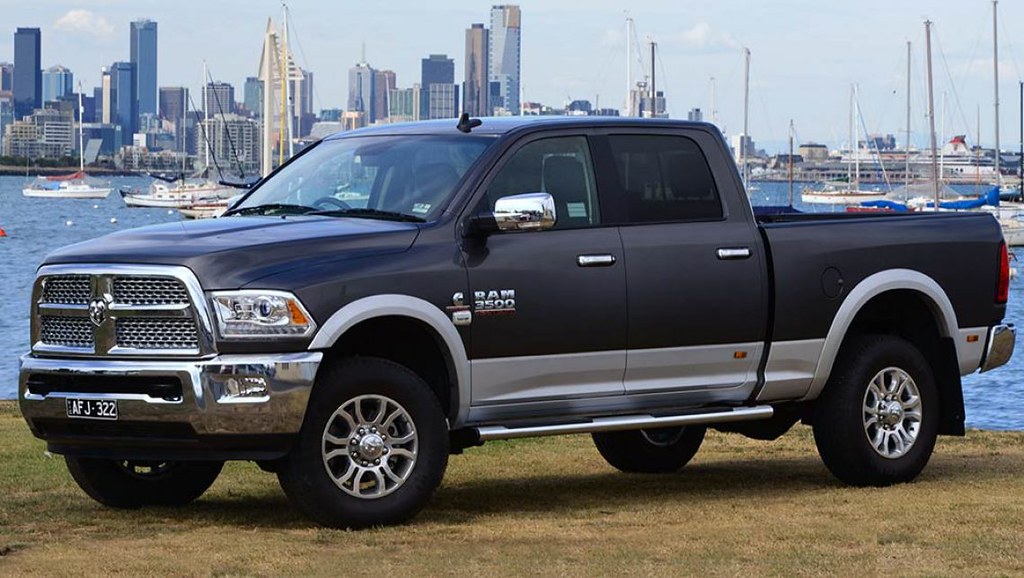
5. **Ram 3500 – The Heavy-Duty Durability Leader**
Transitioning from the robust consumer full-size pickups, we now delve into the realm of heavy-duty trucks, where the definition of longevity and resilience reaches an entirely new echelon. These vehicles are engineered from the ground up for serious, sustained work, serving as indispensable workhorses in commercial fleets, on construction sites, and for towing the heaviest of loads. In this demanding segment, the Ram 3500 stands out as a true titan, a class leader in durability that consistently defies expectations.
According to a compelling 2024 study, the Ram 3500, a formidable one-ton pickup, was identified as the most likely pickup to reach the 250,000-mile mark, with a staggering 42.6% of them achieving this impressive milestone. This places it unequivocally at the forefront of its class in terms of long-term durability, demonstrating an inherent strength and design philosophy geared towards extreme endurance. The engineering prowess that underpins the Ram 3500 ensures it can not only perform exceptionally but also maintain that performance over an extended lifespan, making it a cornerstone for businesses and individuals who demand the utmost reliability from their vehicles.
The extraordinary longevity of the Ram 3500 is largely attributed to its **Robust Diesel Powertrains**. Many heavy-duty (HD) Ram 3500s are specified with the legendary Cummins inline-6 diesel engine, a powerplant that has become synonymous with durability and immense torque. These engines are meticulously constructed with heavy-duty internals, featuring components like forged crankshafts, exceptionally stout connecting rods, and advanced oil-based piston cooling systems, all designed to withstand the most grueling loads and countless hours of operation. The inherently lower operating RPMs of a diesel engine, compared to gasoline counterparts, further translate into a significantly longer operational life, with it being common to hear of these diesel pickups effortlessly surpassing 500,000 miles with only routine maintenance and minor interventions. Even the gasoline engines offered in the Ram 3500 are typically simpler in design and heavily fortified to endure severe abuse.
Complementing its formidable engine, the Ram 3500 features **Upgraded Transmissions and Axles** that are engineered for unyielding strength. The transmissions in HD trucks, such as the renowned Aisin 6-speed automatic found in many Ram HDs, are specifically designed to manage and transfer immense amounts of torque, far exceeding the capabilities of light-duty transmissions. Consequently, they often last considerably longer before requiring significant rebuilds or repairs. Furthermore, every critical component—from the axles and drivelines to the braking systems—is meticulously supersized and built with an unwavering focus on longevity, particularly under constant, heavy-duty loads. This comprehensive reinforcement across the entire drivetrain ensures that the Ram 3500 can reliably perform its demanding tasks day in and day out, for years on end.
The Ram 3500’s design philosophy is also heavily influenced by its **Intended for Fleets** usage. A significant portion of these trucks are deployed in commercial fleets, such as those operated by construction companies or hotshot trucking enterprises, environments where diligent and scheduled maintenance is not just recommended but rigorously enforced. Manufacturers are keenly aware that these trucks must meet stringent fleet expectations for uptime and durability, compelling them to design and build them to exceptionally strict durability standards. For an individual owner-operator, adopting this same “fleet maintenance” mindset—emphasizing regular servicing, thorough inspections, and timely repairs—can transform an HD pickup into a loyal companion that serves reliably for decades, making it a truly long-term asset.
While one can certainly opt for a luxury-trimmed Ram 3500, a substantial number of HD trucks are configured in work-truck trims, which inherently feature fewer complex gadgets and electronics. Manual 4×4 levers, durable vinyl floors, and basic stereo systems mean less sophisticated technology that could potentially fail with age. Even on higher trim levels, the foundational, critical systems—the engine, transmission, and chassis—are constructed with an enduring robustness. This ensures that even if a power seat motor or a minor electronic gadget might eventually require attention, the core mechanical integrity of the truck remains steadfast, designed to outlast and outperform for the long haul. For truck owners whose absolute priority is a vehicle that will last the longest and possess the greatest towing capacity, heavy-duty pickups like the Ram 3500 unequivocally provide the definitive answer. Owners should simply be prepared for a slightly higher upfront investment and marginally increased maintenance costs—such as more oil required for a large diesel engine or the presence of two batteries—all of which are integral parts of the ownership experience for a machine that is, without question, a genuine long-term workhorse, built to conquer any task and any distance.
Transitioning from the robust consumer full-size pickups, we now delve into the realm of heavy-duty trucks, where the definition of longevity and resilience reaches an entirely new echelon. These vehicles are engineered from the ground up for serious, sustained work, serving as indispensable workhorses in commercial fleets, on construction sites, and for towing the heaviest of loads. In this demanding segment, certain heavy-duty pickups and Class 8 semi-trucks stand out as true titans, consistently defying expectations with their inherent strength and design philosophy geared towards extreme endurance. Their ability to perform exceptionally and maintain that performance over an extended lifespan makes them cornerstones for businesses and individuals who demand the utmost reliability from their vehicles, often reaching hundreds of thousands or even millions of miles.
Car Model Information: 2025 RAM ProMaster 3500 High Roof
Name: Dodge Ram / Ram pickup
Caption: 2017 Ram 1500 Express
Manufacturer: Dodge
ModelYears: 1981–present
Production: October 1980 – present
Class: Pickup truck#Full-size pickup truck,Pickup truck#Heavy-duty pickup truck
Layout: Front-engine, rear-wheel-drive layout,rear-wheel drive
Predecessor: Dodge D series
Categories: 1990s cars, 2000s cars, 2010s cars, 2020s cars, All-wheel-drive vehicles
Summary: The Ram pickup (marketed as the Dodge Ram until 2010 when Ram Trucks was spun-off from Dodge) is a full-size pickup truck manufactured by Stellantis North America (formerly Chrysler Group LLC and FCA US LLC) and marketed from 2010 onwards under the Ram Trucks brand. The current fifth-generation Ram debuted at the 2018 North American International Auto Show in Detroit, Michigan, in January of that year.
Previously, Ram was part of the Dodge line of light trucks. The Ram name was introduced in October 1980 for model year 1981, when the Dodge D series pickup trucks and B series vans were rebranded, though the company had used a ram’s-head hood ornament on some trucks as early as 1933.
Ram trucks have been named Motor Trend magazine’s Truck of the Year eight times; the second-generation Ram won the award in 1994, the third-generation Ram heavy-duty won the award in 2003, the fourth-generation Ram Heavy Duty won in 2010 and the fourth-generation Ram 1500 won in 2013 and 2014, and the current fifth-generation Ram pickup became the first truck in history to win the award four times, winning in 2019, 2020, 2021 and most recently, 2025.
Get more information about: Ram pickup
Buying a high-performing used car >>>
Brand: Ram Model: 3500
Price: $44,590 Mileage: 11,822 mi.
Read more about: Dominating the Road: The 2025 Heavy-Duty Trucks Commercial Drivers Can’t Afford to Miss
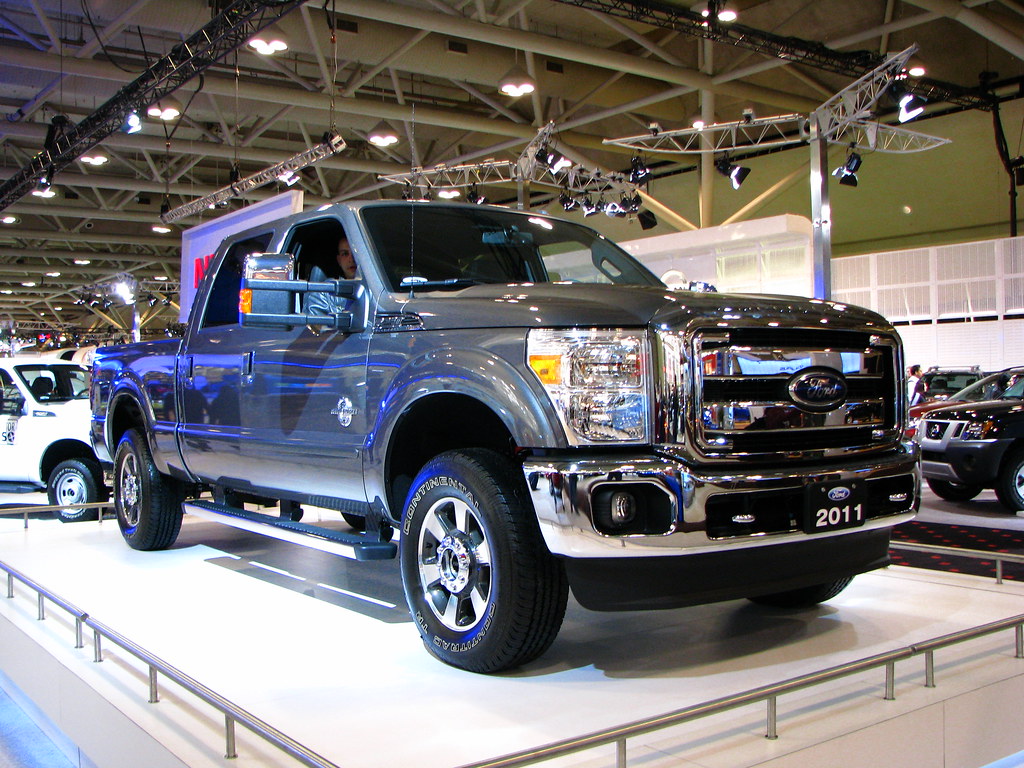
6. **Ford F-350 Super Duty – The Indomitable Heavy-Duty King**
The Ford F-350 Super Duty series has consistently proven itself as a benchmark for durability in the heavy-duty pickup segment. While the Ram 3500 was highlighted for its recent top ranking, the F-350 has previously held the championship title for reaching the 250,000-mile mark, with a previous year’s study noting nearly 49% of them hitting this milestone. More recent data still places it around the high-20% range for reaching 250,000 miles, underscoring its unwavering reputation as a formidable workhorse meticulously designed for demanding tasks and sustained performance.
At the heart of the F-350’s astounding longevity are its **Robust Diesel Powertrains**, particularly the Power Stroke V8. These engines are purpose-built for heavy loads and countless hours of operation, featuring heavy-duty internals like forged crankshafts, stout connecting rods, and advanced oil-based piston cooling systems. The inherently lower operating RPMs characteristic of diesel engines, when compared to their gasoline counterparts, directly contribute to a significantly extended operational life. Even the gasoline engines offered, such as Ford’s 6.2L or 7.3L gas V8s, are typically simpler in design and heavily fortified to endure severe abuse and prolonged, strenuous use.
Complementing these powerful engines, the F-350 features **Upgraded Transmissions and Axles** that are engineered for unyielding strength. The transmissions in these heavy-duty trucks are specifically designed to manage and efficiently transfer immense amounts of torque, far exceeding the capabilities of light-duty transmissions. This meticulous design means they often last considerably longer before necessitating major rebuilds or repairs. Furthermore, every critical component—from the axles and drivelines to the braking systems—is meticulously supersized and built with an unwavering focus on longevity, especially when subjected to constant, heavy-duty loads. Ford’s rigorous durability testing, often highlighted with millions of miles of simulated tests, ensures these trucks are built to withstand the harshest conditions.
The F-350’s design philosophy is heavily influenced by its **Intended for Fleets** usage. A substantial portion of these trucks are deployed in commercial fleets, such as those operated by construction companies or hotshot trucking enterprises, where diligent and scheduled maintenance is not just recommended but rigorously enforced. Manufacturers are keenly aware that these trucks must meet stringent fleet expectations for uptime and durability, compelling them to design and build them to exceptionally strict standards. For an individual owner-operator, adopting this same “fleet maintenance” mindset—emphasizing regular servicing, thorough inspections, and timely repairs—can transform an F-350 into a loyal companion that serves reliably for decades, proving its worth as a true long-term asset.
Car Model Information: 2022 Hyundai PALISADE Calligraphy
Name: Ford Super Duty,(F-250/F-350/F-450/F-550/F-600)
Caption: 2020 Ford F-250
Manufacturer: Ford Motor Company
Production: January 5, 1998–present
ModelYears: 1999–present
Class: pickup truck
Layout: Front-engine, rear-wheel-drive layout
Predecessor: Ford F-Series (ninth generation)
Categories: 2000s cars, 2010s cars, All-wheel-drive vehicles, All articles with bare URLs for citations, Articles with bare URLs for citations from August 2024
Summary: The Ford Super Duty (also known as the Ford F-Series Super Duty) is a series of heavy-duty pickup trucks produced by the Ford Motor Company since the 1999 model year. Slotted above the consumer-oriented Ford F-150, the Super Duty trucks are an expansion of the Ford F-Series range, from F-250 to the F-600. The F-250 through F-450 are offered as pickup trucks, while the F-350 through F-600 are offered as chassis cabs.
Rather than adapting the lighter-duty F-150 truck for heavier use, Super Duty trucks have been designed as a dedicated variant of the Ford F-Series. The heavier-duty chassis components allow for heavier payloads and towing capabilities. With a GVWR over 8,500 lb (3,900 kg), Super Duty pickups are Class 2 and 3 trucks, while chassis-cab trucks are offered in Classes 3, 4, 5, and 6. The model line also offers Ford Power Stroke V8 diesel engines as an option.
Ford also offers a medium-duty version of the F-Series (F-650 and F-750), which is sometimes branded as the Super Duty, but is another chassis variant. The Super Duty pickup truck also served as the basis for the Ford Excursion full-sized SUV.
The Super Duty trucks and chassis-cabs are assembled at the Kentucky Truck Plant in Louisville, Kentucky, and at Ohio Assembly in Avon Lake, Ohio. Prior to 2016, medium-duty trucks were assembled in Mexico under the Blue Diamond Truck joint venture with Navistar International.
Get more information about: Ford Super Duty
Buying a high-performing used car >>>
Brand: Ford Model: F-350 Super Duty
Price: $34,194 Mileage: 37,781 mi.
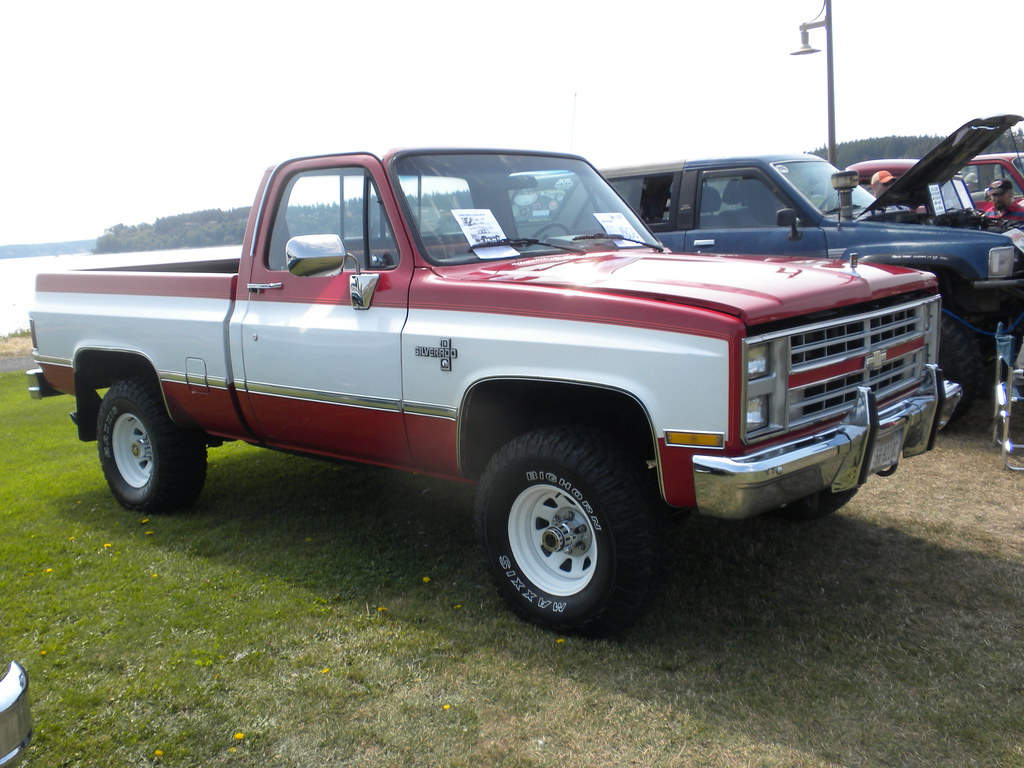
7. **Chevrolet Silverado/GMC Sierra 2500HD/3500HD – The Beefed-Up Twins**
General Motors’ heavy-duty offerings, the Chevrolet Silverado 2500HD/3500HD and the GMC Sierra HD models, represent another formidable force in the realm of long-lasting trucks. These robust pickups are mechanically identical, sharing a common platform and engineering designed specifically for demanding commercial and heavy-duty personal use. With a strong presence in fleets and among private owners who require serious capability, these trucks consistently score well in longevity studies, with approximately 25–30% of them reaching the impressive 250,000-mile mark, significantly exceeding the average for all vehicles.
Central to the exceptional endurance of the GM HD twins are their **Robust Diesel Powertrains**, most notably the venerable Duramax V8. These engines are meticulously constructed with heavy-duty internals and are renowned for their ability to sustain heavy loads and prolonged operation without faltering. Coupled with their inherent design for high torque and lower operating RPMs, the Duramax engines, when properly maintained, routinely log hundreds of thousands of miles with remarkable reliability. Even the gasoline engines offered, such as GM’s 6.6L gas V8s, are specifically engineered to be simpler in design and heavily fortified to withstand severe abuse, ensuring long-term performance across various applications.
Supporting these powerful engines are **Upgraded Transmissions and Axles** that are purpose-built for unwavering strength under extreme conditions. The transmissions in GM HD trucks, exemplified by the renowned Allison 6-speed automatic found in many Duramax diesels, are meticulously designed to efficiently manage and transfer immense amounts of torque. This specialized engineering allows them to often last considerably longer before requiring significant rebuilds or repairs compared to their light-duty counterparts. Furthermore, every component in the driveline, from the axles and drivelines to the braking systems, is substantially supersized and constructed with an unwavering focus on longevity, particularly under constant, heavy-duty loads.
The **Rugged Construction** of the Silverado and Sierra HD models is another vital element in their enduring appeal. The frame and suspension systems of these trucks are unequivocally built for serious work—designed to handle substantial towing loads, carry heavy payloads, and absorb the relentless punishment of rough roads and challenging terrain. These trucks inherit a proud lineage from a heritage of farm and ranch vehicles, known for their ability to withstand severe abuse and continue operating without complaint. Additionally, many HD trucks are configured in work-truck trims, which inherently feature fewer complex gadgets and electronics. While luxury trims are available, the foundational, critical systems—the engine, transmission, and chassis—are constructed with an enduring robustness, ensuring the core mechanical integrity remains steadfast even if minor electronic components might eventually require attention. If maintained diligently, these trucks can serve reliably for 15 to 20 years or even longer.
### Class 8 Semi Trucks – Million-Mile Monsters
When it comes to achieving true marathon levels of mileage and operational life, Class 8 semi-trucks—the tractor units that haul freight across continents—stand in a league of their own. These machines are not just built to last; they are engineered for a life measured in hundreds of thousands, and often millions, of miles. For owner-operators and fleet managers, their livelihood directly depends on these rigs’ unwavering reliability, making longevity the paramount design consideration. With proper maintenance, it’s common for semi-truck engines to boast a B50 life around 1,000,000 miles, meaning at least half will reach that mark before an overhaul, with many designed for 90% to reach a million miles (B10 life). Similarly, transmissions and axles are robustly engineered to handle heavy torque for years, often lasting 500,000+ miles before significant work.
Car Model Information: 2018 Chevrolet Silverado 1500 1LT
Name: Chevrolet Silverado/GMC Sierra
Caption: 2022 Silverado 2500HD High Country
Manufacturer: General Motors
Aka: unbulleted list
Production: 1998–present
Assembly: unbulleted list
Class: unbulleted list
BodyStyle: unbulleted list
Layout: unbulleted list
Predecessor: unbulleted list
Categories: 2000s cars, 2010s cars, 2020s cars, All-wheel-drive vehicles, All Wikipedia articles written in American English
Summary: The Chevrolet Silverado is a range of trucks manufactured by General Motors under the Chevrolet brand. Introduced for the 1999 model year, the Silverado is the successor to the long-running Chevrolet C/K model line. Taking its name from the top trim level from the Chevrolet C/K series, the Silverado is offered as a series of full-size pickup trucks, chassis cab trucks, and medium-duty trucks. The fourth generation of the model line was introduced for the 2019 model year.
The Chevrolet Silverado shares mechanical commonality with the identically related GMC Sierra; GMC ended the use of the C/K nomenclature a model generation prior to Chevrolet. In Mexico, high-trim level versions of the Silverado use the Chevrolet Cheyenne name (not to be confused with the 2003 concept). Competing against the Ford F-Series, Ram pickup, Toyota Tundra, and Nissan Titan, the Silverado is among the best-selling vehicles in the United States, having sold over 12 million trucks since its introduction in 1998 as a 1999 model year.
Get more information about: Chevrolet Silverado
Buying a high-performing used car >>>
Brand: Chevrolet Model: Silverado
Price: $23,691 Mileage: 117,478 mi.
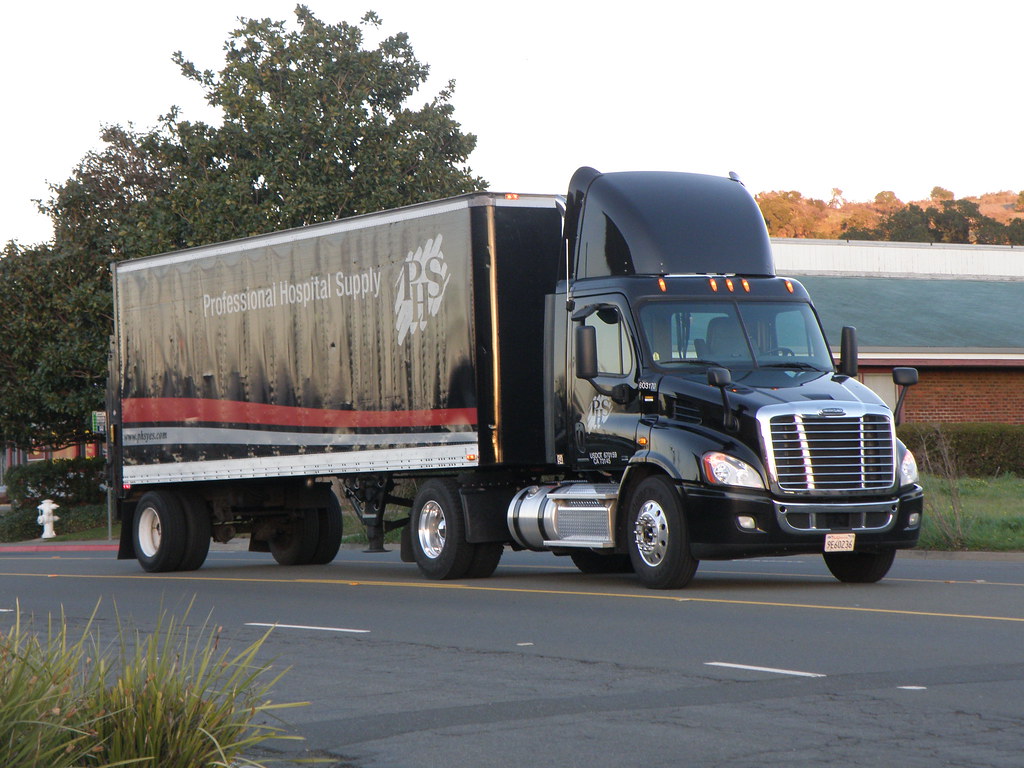
8. **Freightliner Cascadia – The Highway Dominator**
The Freightliner Cascadia is an undeniably ubiquitous sight on American highways, a testament to its exceptional balance of reliability and lower operating costs that makes it a fleet favorite. As a crucial part of Daimler Trucks, Freightliner provides an extensive service network, which is a significant advantage for maintaining these trucks over their incredibly long lifespans. With diligent and scheduled maintenance, Cascadias routinely log well over 1,000,000 miles, demonstrating their fundamental design for continuous, heavy-duty operation.
Cascadias are commonly equipped with Detroit Diesel engines, such as the DD13 and DD15 inline-6, or offer the Cummins X15 as an optional powerplant. These engines are specifically designed for high mileage and sustained performance, featuring robust construction tailored for the relentless demands of long-haul trucking. The extensive service network supporting Detroit Diesel engines means that parts and expert technicians are readily available, minimizing downtime and supporting the truck’s operational life. Furthermore, the Cascadia’s advanced aerodynamic design plays a subtle yet significant role in its longevity by reducing strain on the engine during long hauls, indirectly contributing to the powertrain’s endurance by maintaining moderate engine loads.
The strategic design of the Cascadia places a strong emphasis on serviceability and uptime, crucial factors for commercial fleets. Its components are built to endure non-stop operation, and the ability to quickly access and service parts through a wide network of dealers and authorized repair centers ensures that these trucks spend more time on the road earning revenue. This comprehensive support infrastructure, combined with robust engineering, solidifies the Cascadia’s reputation as a reliable, long-term asset capable of powering businesses for years, truly embodying the spirit of a million-mile machine.

9. **Peterbilt 579 – The Owner-Operator’s Choice for Longevity**
Peterbilt trucks command an almost cult-like following within the trucking industry, largely owing to their exceptional build quality and legendary durability. Models like the classic 379/389 and the more modern 579 are frequently the top choice for owner-operators who envision a truck lasting not just a few years, but potentially a lifetime. This brand, a proud part of PACCAR, is revered for its commitment to robust construction and the use of high-quality materials, distinguishing it in a competitive market.
Peterbilt models typically feature either PACCAR’s proprietary MX-13 engines or the highly respected Cummins X15. These powerplants, when coupled with Peterbilt’s inherently strong chassis and premium components, form a drivetrain designed for extreme endurance. Peterbilts are lauded for their robust construction, which often includes features like aluminum cabs that are highly resistant to rust and stainless-steel fittings, all contributing to their incredible longevity. The use of such high-quality materials ensures structural integrity and a refined resilience that allows these trucks to withstand the rigors of the road for exceptionally long periods.
The reputation of a Peterbilt isn’t just anecdotal; it’s powerfully reflected in their consistently high long-term resale value, a clear indicator that buyers trust these trucks to have considerable life left even after accumulating substantial mileage. Many Peterbilts easily exceed a million miles, and with judicious maintenance and planned rebuilds, it’s not uncommon for some to achieve two million miles or more. This remarkable potential for extended operational life, combined with a strong community of dedicated owner-operators who prioritize meticulous care, solidifies Peterbilt’s standing as a premier choice for longevity.
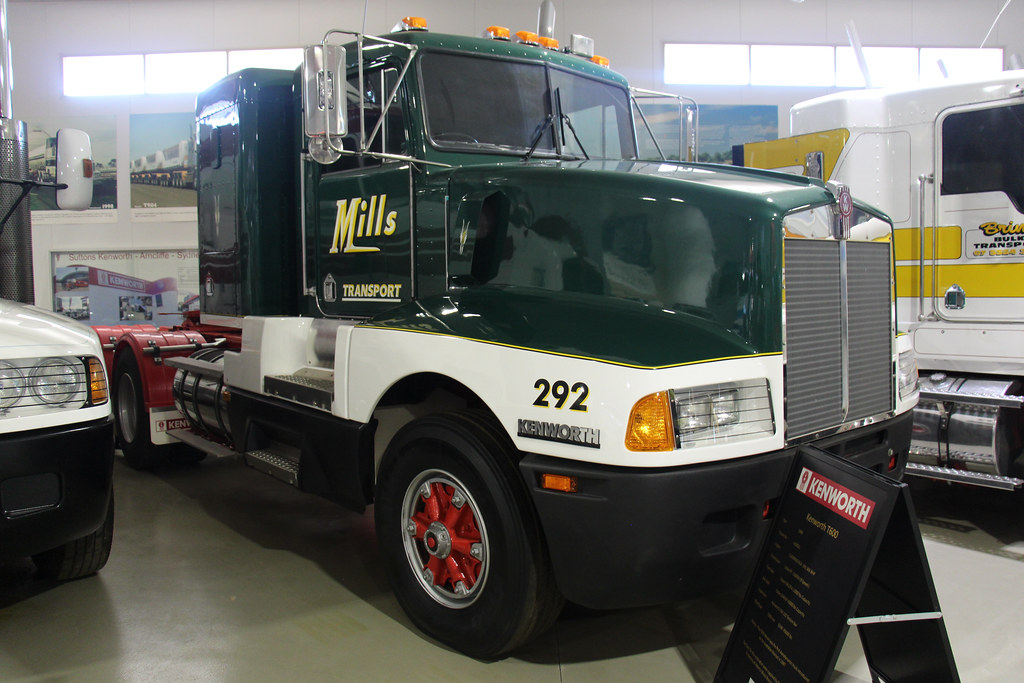
10. **Kenworth T680 – The Enduring Road Warrior**
As a sister company to Peterbilt, also under the PACCAR umbrella, Kenworth trucks share a significant portion of the same robust DNA and an equally strong reputation for longevity. Models like the long-haul oriented Kenworth T680, and the heavy-duty and vocational T800/W900, are renowned for their ability to endure extensive mileage and demanding work cycles. Kenworth’s engineering philosophy places a strong emphasis on serviceability and efficient operation, ensuring that these trucks are not only built tough but are also practical to maintain over their extended lifespans.
Kenworths typically come equipped with either PACCAR’s powerful MX-13 engines or the reliable Cummins X15. These engines are integrated into a comprehensive system that is designed for maximum durability. Kenworth engineers focus on crucial details, such as excellent cooling systems to prevent wear and component accessibility for streamlined maintenance, which are vital for a truck expected to operate for a million miles or more. This meticulous attention to detail in design and manufacturing ensures that Kenworth trucks are built to withstand the punishing realities of continuous highway use.
Many drivers and fleet managers report outstanding longevity from their Kenworth trucks, often reaching 1.2 to 1.5 million miles before necessitating major engine rebuilds. This impressive endurance is a direct outcome of the brand’s commitment to quality components and a foundational design philosophy centered on enduring robustness. The T680, in particular, benefits from advanced aerodynamics which, similar to the Cascadia, help reduce overall strain on the drivetrain, further contributing to its long-term reliability and keeping operational costs manageable over an extended service life.
### Conclusion
In the world of trucks, longevity and reliability are the ultimate compliments, embodying the true value of a substantial investment. From the indestructible Toyota pickups that refuse to quit, to the formidable heavy-duty workhorses like the Ford F-350, and finally to the monumental Class 8 semi-trucks crossing a million miles on America’s highways, the longest-lasting trucks prove their worth every single day. As we’ve explored, choosing a durable model—whether it’s a Toyota Tundra for your personal tasks, a Ford F-350 for your business, or a Freightliner Cascadia, Peterbilt 579, or Kenworth T680 for your rigorous long-haul routes—is undeniably the crucial first step.
However, selecting a champion of durability is only half the journey. The unwavering secret to unlocking and maximizing that inherent longevity lies in treating that machine right. This involves a steadfast commitment to **Regular Servicing**, meticulously adhering to the manufacturer’s maintenance schedule for oil changes, fluid replacements, and filter renewals. It means embracing **Timely Component Replacements**, proactively addressing wear-and-tear items like belts and hoses before they can cause catastrophic failures. Regular **Inspections** are paramount, catching minor issues like fluid leaks or unusual sounds before they escalate into costly breakdowns.
Furthermore, environmental factors matter; **Keeping It Clean**, especially the undercarriage, is essential to combat rust, a leading killer of older trucks. Your **Driving Habits Matter** immensely, as gentle acceleration and moderate speeds significantly reduce stress on critical drivetrain components. Never **Overload** your truck, as consistently exceeding its rated capacities will drastically shorten its lifespan. Finally, always opt for **Quality Parts and Repairs**; investing in OEM or reputable aftermarket components and professional service will pay dividends in extended operational life. By diligently applying these maintenance and care tips, you are not just preserving your truck; you are transforming it into a loyal, long-term asset that will serve you reliably for decades to come, conquering countless miles and proving its enduring value day in and day out.



